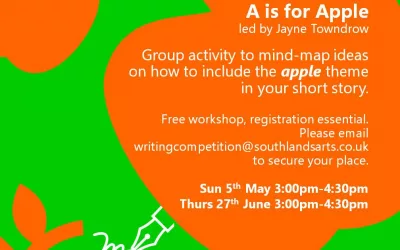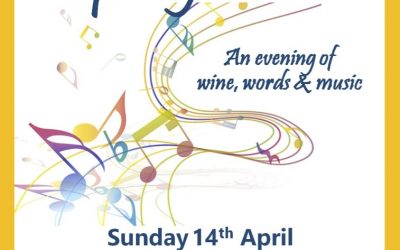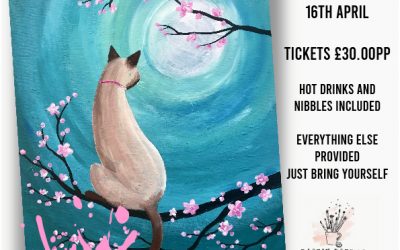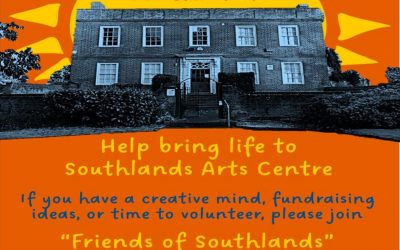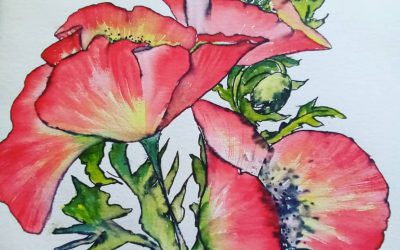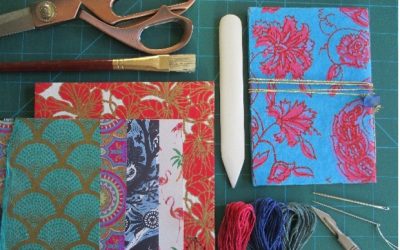Our History
The History of Southlands Arts Centre
In the sixteenth century, a Tudor farmhouse stood on the site of the present rear portion of Southlands.
Little is known of its early history, but by the end of the seventeenth century, it was occupied by a yeoman farmer, George Cowdery, whose family had lived in West Drayton for at least a hundred years.
George Cowdery farmed most of the land in the part of West Drayton around Southlands. He had a large family, which was probably the reason why he enlarged his farmhouse by erecting on the front of it the fine Queen Anne exterior. The Dining room contains a painted alcove in which the words “Mr Cowdery, West Drayton” appear.
Three of Cowdery’s children died in infancy. Two daughters, Katherine and Ann, survived. Cowdery had another son in his middle age who, who was baptised George, in August 1727.
In 1743 Cowdery insured his property with the Sun Insurance Office, the company’s firemark may be seen on the front of the house. The house was insured for £500. The outbuilding comprising a stable, granary, barn, outhouses and carthouse were insured for £240. Dutch barn and Granary insured for £60.
Up until January 2003, only the seventeenth-century barn remained, as it was burnt to the ground, suspected arson attached. Reference here.
An inclosure Map of 1828 shows the full range of farm buildings. And from this it is very obvious that Cowdery was farming on a very large scale.
On 26 February 1745, Cowdery made a will leaving property outside the parish to his married daughters, Katherine Hatchett and Ann Woodman. To his young son, George, he left the West Drayton property – subject to an annual charge of £1 on Mill Close (now St Martins Road to provide bread for the poor – his household goods, leases, cattle, coin, debts, ready money, plate and jewels.
Cowdery dies in 1747, when his son George was 19 years.
The younger Cowdery’s life was short, and died just before his 32nd birthday. He had married Martha Honnor and by her had 3 sons, George, William and John. Two years before his death, George made his will, which suggests that his health was not good and anticipated an early death. Southlands was to his wife for life, and then to his eldest son.
By 1828, Southlands was in possession of John Hatchett, a descendant of Katherine Hatchett (daughter of George Cowdery the Elder). On Hatchetts death the copyhold passed to his daughter, Mary, who married George Classon, a builder. In 1864 the Tudor part of the house was replaced by the present rear portion and most of the outbuilding were demolished. In 1877 the Classons purchased the freehold.
On the death of George Classon, Southlands passed to his daughter, Mary Rose Classon, who lived at Swains, Swan Road. She died in 1943.
In the early part of the century, Mary Rose leased Southlands to Cosmo Hamilton, a Novelist, and his Actress wife Beryl Faber (née Crossley Smith, sister of actor C. Aubrey Smith).
While at Southlands, Hamilton wrote “The Blindness of Virtue”, which was based on life in West Drayton at that time. A copy can be seen online here, digitised by Google for future preservation. https://archive.org/details/blindnessvirtue02hamigoog
Cosmo Hamilton left Southlands in 1911. It was then leased to the Davey family who purchased the freehold in 1930.
Southlands had been left, with no resident for some time after this point. We are unsure of the exact timings. The local authority placed a care taker to keep a general eye on Southlands and the grounds.
The property caught the eye of Local Artist, Les Nind. Who was looking to set up a local art centre. The house then was in a bad way and would need a degree of regeneration.
In 1963 the property was acquired by Yiewsley and West Drayton Urban District Council. Les Nind, set up Yiewsley and West Drayton Arts Council, which he became the Chairman, and wrote the constitution for the Arts Council of Yiewsley and West Drayton. He then invited Sir Allen Lane to be the president, which he accepted. In December 1964 it was agreed by then by Yiewsley and West Drayton Urban and District Council, to lease Southlands as an Art Centre for a seven year lease at a peppercorn rent.
Acquiring the tenure for what is now Southlands Arts Centre in 1965.
In 2009, The interior of Southlands was used for the film Micro Men – (Sinclair Vs. Acorn BBC docudrama).
A one-off BBC drama television show set in the late 1970s and the early-mid 1980s, about the rise of the British home computer market. It focuses on the rivalry between Sir Clive Sinclair (played by Alexander Armstrong), who developed the ZX Spectrum, and Chris Curry (played by Martin Freeman), the man behind the BBC Micro.
Wiki link https://en.wikipedia.org/wiki/Micro_Men
Video Below
In 2017, with a dedication and hard work by the Yiewsley and West Drayton Arts Council, Southlands officially gained charity status.
Recent notoriety, The Right Honourable John McDonnell MP (Shadow Chancellor of the Exchequer) has been a frequent visitor and supporter of Southlands Arts Centre. Who frequently visits The Arts Exhibitions, and Southlands LIVE (Music festival).
Poet and writer, Daljit Nagra (Forward Poetry Prize winner for 2004 and 2007. ) has held workshops at Southlands during 2016/17.
Early history based on previous text by Lord Willis (FRSA), other contributors to this article are Frazer Fenton, Les Nind, Arthur Rooks and John Davis.
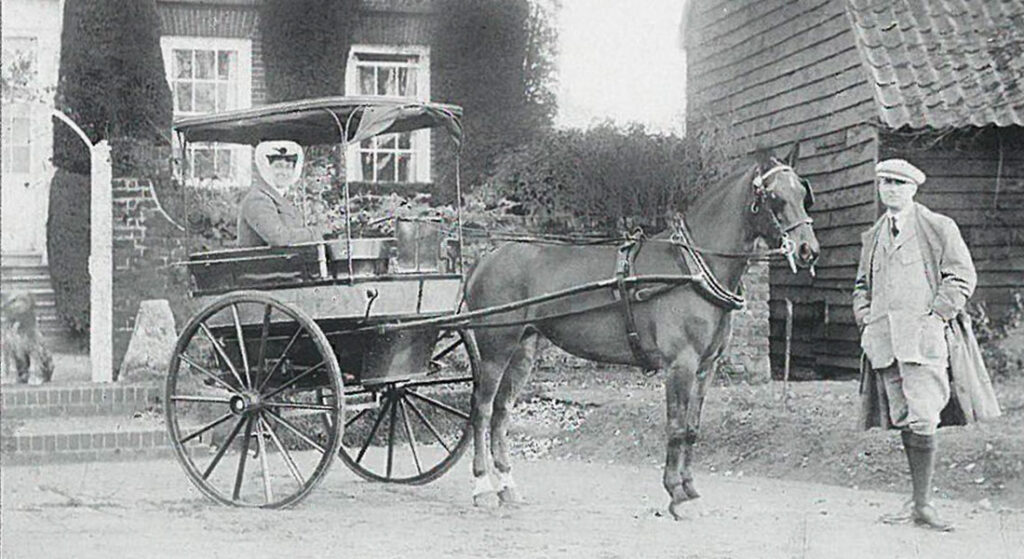
News & Events
A is for Apple – Creative Writing Workshop
Led by Jayne Towndrow, this group session will focus on the topic of the...
Springtime Revels
Sunday 14th April 7pm to 9pm Join us from 7pm for an evening of wine, words...
Easely Does It – Koko
Painting party. Come join us for a fun and creative evening at The Southlands...
Friends of Southlands meeting
Help to bring life to Southlands Arts centre. Please join us if you have a...
Day Art Retreat
Join Artist Mary Pomeroy for a full day of expert tutor-led sessions packed...
Bookbinding: Coptic Stitching
June/July Would you like to learn a new skill? Join us at Southlands Arts...
